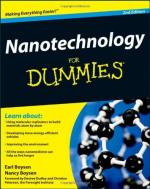|
This section contains 1,686 words (approx. 6 pages at 300 words per page) |

|
Like a swarm of bees, tiny humanmade satellites—called nanosatellites or picosatellites, depending on their size—may one day fly in formation to remote destinations throughout the solar system. Upon reaching their targets, they will spread out to investigate the area, perhaps one satellite landing on each of a thousand asteroids, crawling around its surface, and sending data back to scientists waiting on Earth. Another swarm might cover the surface of Mars with an army of explorers, investigating more area in one day than a standard rover could reach in several years. Alternatively, the group might be designed to stay together to accomplish its mission: a cluster of satellites each carrying a tiny mirror could be coordinated to act as one giant telescope mirror, surpassing the Hubble Space Telescope's light-gathering power by a factor of a thousand.
Problems with Large Satellites
Typical satellites deployed in the early twenty-first...
|
This section contains 1,686 words (approx. 6 pages at 300 words per page) |

|


